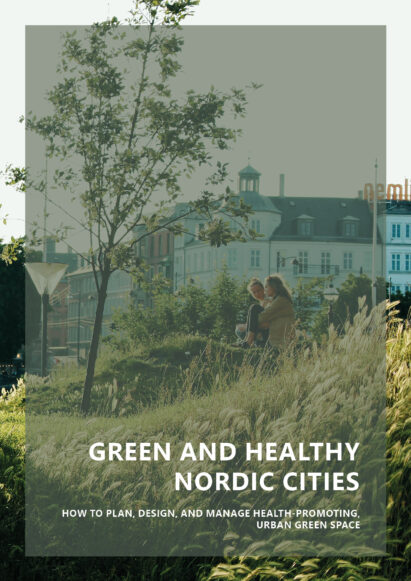Much of life in the Nordic countries is coloured in shades of green. Even in dense urban areas where population increase might otherwise threaten the availability of green space, public accessibility to parks, forests, and other natural resources remains high. While rural areas can often claim high green area coverage, Nordic cities challenge the notion that modern urban life must take the shape of a concrete jungle.
Instead, many municipalities throughout Sweden, Norway, Finland, and Denmark show how cities can provide exposure to, accessibility to, and engagement with green outdoor environments. By doing so, planners, designers, and managers provide their residents with public spaces that can reduce stress, offer social benefits, and enable physical activity, all of which promote well-being in their populations.
This handbook aims to increase awareness and deliver knowledge to planners and policymakers on how to plan, design, and govern urban green space to promote human health and well-being. It builds on the scientific evidence showing the potential of green space to positively influence people´s health and well-being.
The handbook presents tools and methods for developing and maintaining health-promoting green space in the context of Nordic cities. Our hope with this handbook is that practitioners are both inspired and challenged to plan, design, and manage urban environments that promote the health and well-being of the people who call their cities home!









